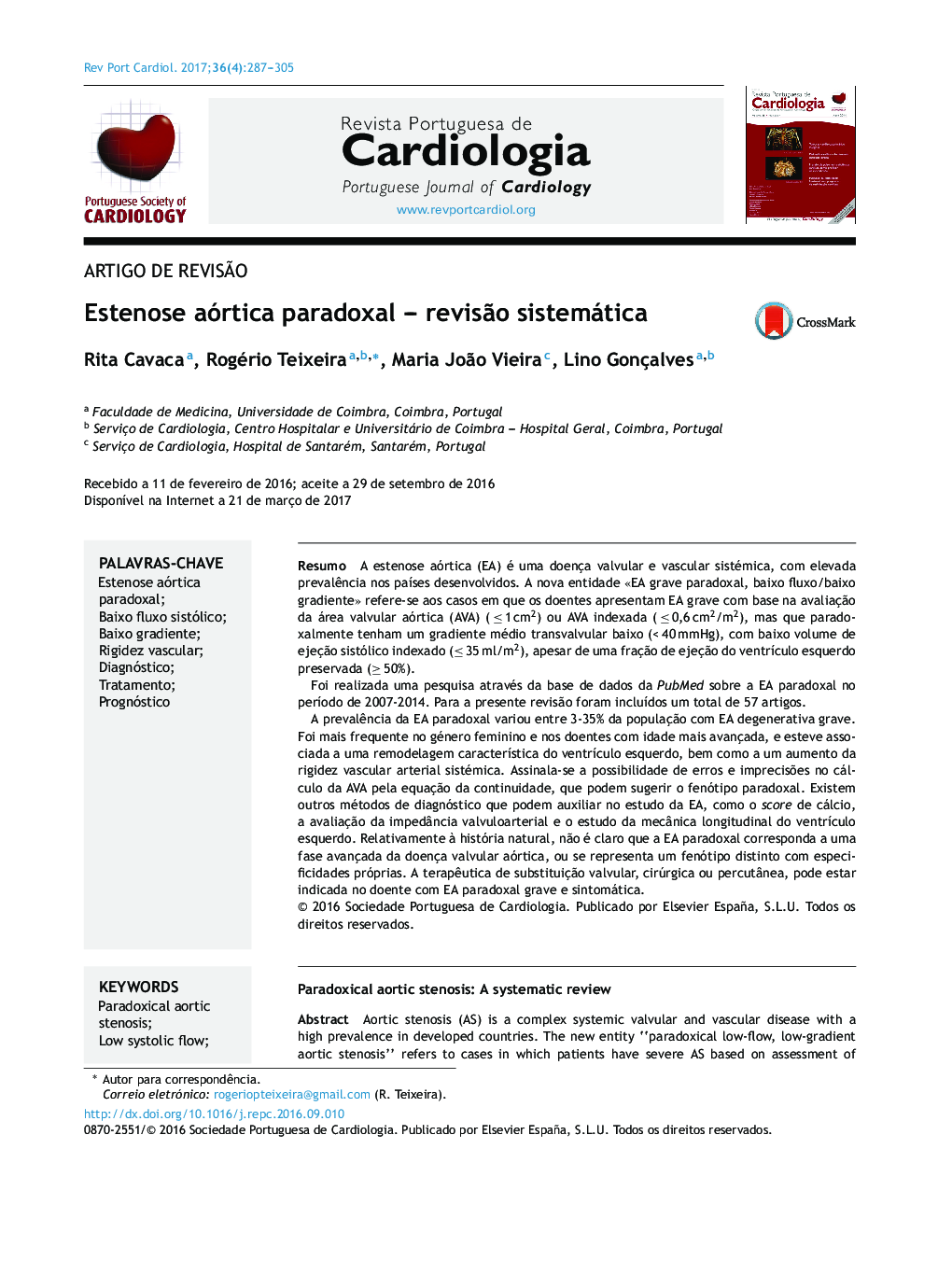| کد مقاله | کد نشریه | سال انتشار | مقاله انگلیسی | نسخه تمام متن |
|---|---|---|---|---|
| 5126482 | 1378500 | 2017 | 19 صفحه PDF | دانلود رایگان |

ResumoA estenose aórtica (EA) é uma doença valvular e vascular sistémica, com elevada prevalência nos paÃses desenvolvidos. A nova entidade «EA grave paradoxal, baixo fluxo/baixo gradiente» refereâse aos casos em que os doentes apresentam EA grave com base na avaliação da área valvular aórtica (AVA) ( â¤Â 1 cm2) ou AVA indexada ( â¤Â 0,6 cm2/m2), mas que paradoxalmente tenham um gradiente médio transvalvular baixo (< 40 mmHg), com baixo volume de ejeção sistólico indexado (â¤Â 35 ml/m2), apesar de uma fração de ejeção do ventrÃculo esquerdo preservada (â¥Â 50%).Foi realizada uma pesquisa através da base de dados da PubMed sobre a EA paradoxal no perÃodo de 2007â2014. Para a presente revisão foram incluÃdos um total de 57 artigos.A prevalência da EA paradoxal variou entre 3â35% da população com EA degenerativa grave. Foi mais frequente no género feminino e nos doentes com idade mais avançada, e esteve associada a uma remodelagem caracterÃstica do ventrÃculo esquerdo, bem como a um aumento da rigidez vascular arterial sistémica. Assinalaâse a possibilidade de erros e imprecisões no cálculo da AVA pela equação da continuidade, que podem sugerir o fenótipo paradoxal. Existem outros métodos de diagnóstico que podem auxiliar no estudo da EA, como o score de cálcio, a avaliação da impedância valvuloarterial e o estudo da mecânica longitudinal do ventrÃculo esquerdo. Relativamente à história natural, não é claro que a EA paradoxal corresponda a uma fase avançada da doença valvular aórtica, ou se representa um fenótipo distinto com especificidades próprias. A terapêutica de substituição valvular, cirúrgica ou percutânea, pode estar indicada no doente com EA paradoxal grave e sintomática.
Aortic stenosis (AS) is a complex systemic valvular and vascular disease with a high prevalence in developed countries. The new entity “paradoxical lowâflow, lowâgradient aortic stenosis” refers to cases in which patients have severe AS based on assessment of aortic valve area (AVA) (â¤1 cm2) or indexed AVA (â¤0.6 cm2/m2), but paradoxically have a low mean transvalvular gradient (<40 mmHg) and a low stroke volume index (â¤35 ml/m2), despite preserved left ventricular ejection fraction (â¥50%).A search was carried out in the PubMed database on paradoxical AS for the period 2007â2014. A total of 57 articles were included for this review. The prevalence of paradoxical AS ranged from 3% to 35% of the population with severe degenerative AS. It was more frequent in females and in older patients. Paradoxical AS was associated with characteristic left ventricular remodeling as well as an increase in systemic arterial stiffness. It was noted that there may be errors and inaccuracies in the calculation of AVA by the continuity equation, which could erroneously suggest the paradoxical phenotype. There are new diagnostic methods to facilitate the study of AS, such as aortic valve calcium score, valvuloarterial impedance and the longitudinal mechanics of the left ventricle. With regard to its natural history, it is not clear whether paradoxical AS corresponds to an advance stage of the disease or if paradoxical AS patients have a distinct phenotype with specific characteristics. Valve replacement, either surgical or percutaneous, may be indicated in patients with severe and symptomatic paradoxical AS.
Journal: Revista Portuguesa de Cardiologia - Volume 36, Issue 4, April 2017, Pages 287-305